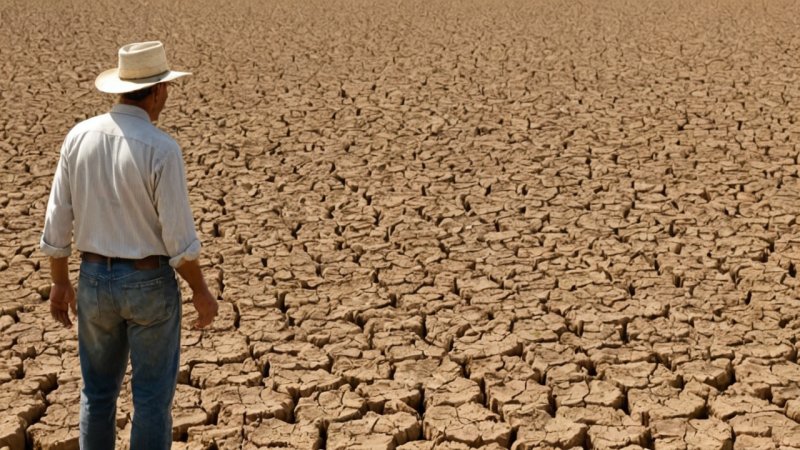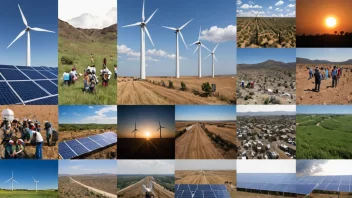As the planet warms and weather patterns shift, the agricultural sector faces unprecedented challenges that threaten food security and rural livelihoods. Climate change is not just an environmental issue; it is a complex interplay of ecological, economic, and social factors that significantly impacts agricultural yields worldwide. Understanding these effects is crucial for farmers, policymakers, and consumers alike as we navigate a future where climate variability becomes the norm. This article delves into the various ways climate change affects agriculture, exploring the implications for crop production, livestock, and food systems while highlighting potential solutions and adaptations.
Understanding Climate Change and Its Impact on Agriculture
Climate change refers to long-term alterations in temperature, precipitation patterns, and other atmospheric conditions. These changes are primarily driven by human activities, such as burning fossil fuels, deforestation, and industrial processes, which increase greenhouse gas emissions. For agriculture, these shifts can manifest in various ways, including altered growing seasons, increased pest and disease prevalence, and changes in soil quality.
Temperature Changes and Crop Yields
One of the most direct effects of climate change on agriculture is the increase in average temperatures. Crops have specific temperature ranges in which they thrive, and even slight deviations can lead to reduced yields. For instance, research indicates that for every degree Celsius increase in temperature, wheat yields may decline by approximately 6%. This decline is particularly concerning for staple crops such as rice, maize, and soybeans, which are essential for global food security.
Altered Precipitation Patterns
Alongside rising temperatures, climate change is altering precipitation patterns, leading to both droughts and floods in different regions. Drought can severely impact crop growth and yield, especially in areas reliant on rain-fed agriculture. Conversely, excessive rainfall can lead to flooding, soil erosion, and crop damage. These extreme weather events not only threaten current agricultural practices but also challenge traditional farming methods, pushing farmers to adapt to new realities.
Pest and Disease Dynamics
Climate change also influences the distribution and lifecycle of pests and diseases that affect crops and livestock. Warmer temperatures can extend the breeding seasons of pests, while changing precipitation patterns can create favorable conditions for diseases to thrive. For example, the expansion of the range of the fall armyworm, a significant pest for maize, has been linked to climate change, leading to increased crop losses and economic stress for farmers.
Impact on Livestock and Fisheries
While much of the focus on climate change and agriculture is on crops, livestock and fisheries are equally affected. Heat stress can reduce livestock productivity, affecting growth rates, milk production, and reproductive performance. Additionally, extreme weather events can disrupt feed supply and water availability, further stressing livestock operations. In fisheries, rising ocean temperatures and acidification threaten fish stocks and marine biodiversity, impacting communities reliant on fishing for their livelihoods.
Food Security and Economic Implications
The impacts of climate change on agricultural yields have profound implications for food security and economic stability. As yields decline, food prices are likely to rise, making it more challenging for vulnerable populations to access adequate nutrition. This scenario can lead to increased food insecurity, particularly in developing countries where agriculture is a primary source of income and sustenance. Furthermore, the economic viability of farming is at risk, with potential losses affecting rural economies and livelihoods.
Adapting to Change: Strategies for Resilience
Despite the daunting challenges posed by climate change, there are strategies that farmers and policymakers can adopt to build resilience in agricultural systems. These include:
- Crop Diversification: Growing a variety of crops can reduce the risk of total crop failure and improve soil health.
- Climate-Smart Agriculture: Implementing practices that increase productivity while reducing greenhouse gas emissions, such as agroforestry and conservation tillage.
- Improved Water Management: Utilizing efficient irrigation systems and rainwater harvesting to mitigate the effects of drought.
- Research and Innovation: Investing in agricultural research to develop climate-resilient crop varieties and farming techniques.
Conclusion
Climate change poses significant threats to agricultural yields, with far-reaching implications for food security, economic stability, and rural livelihoods. As temperatures rise and weather patterns become increasingly erratic, it is essential for farmers, researchers, and policymakers to collaborate on solutions that enhance resilience in the agricultural sector. By understanding the impacts of climate change and adopting adaptive strategies, we can work towards a sustainable agricultural future that meets the needs of a growing global population.






